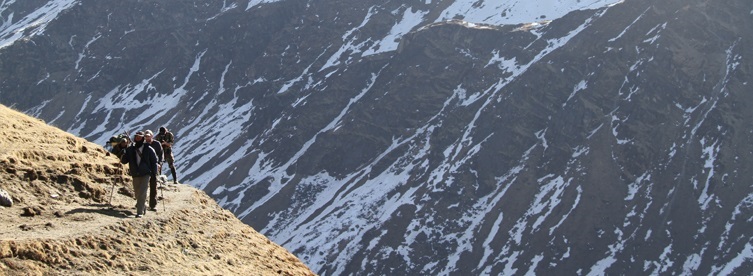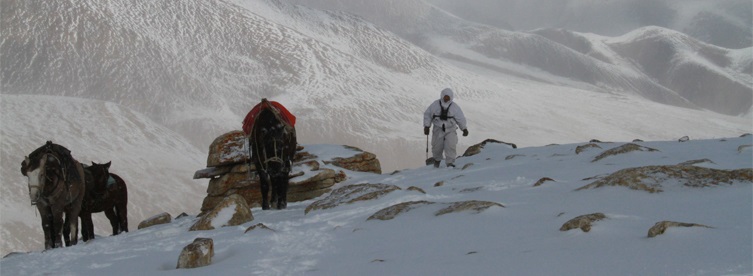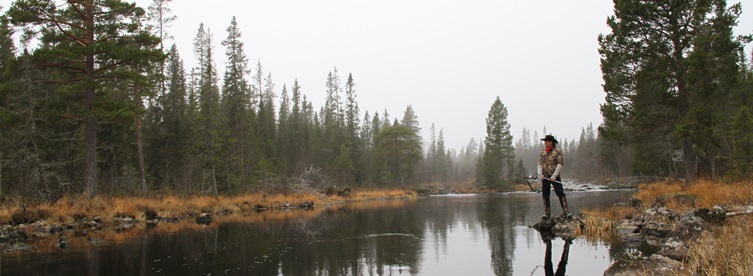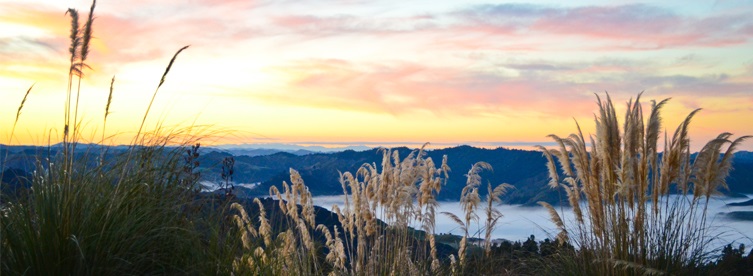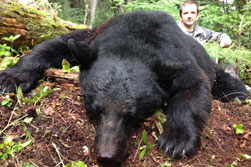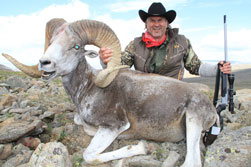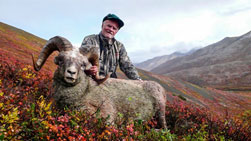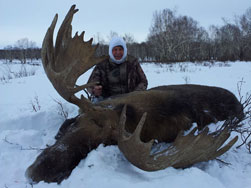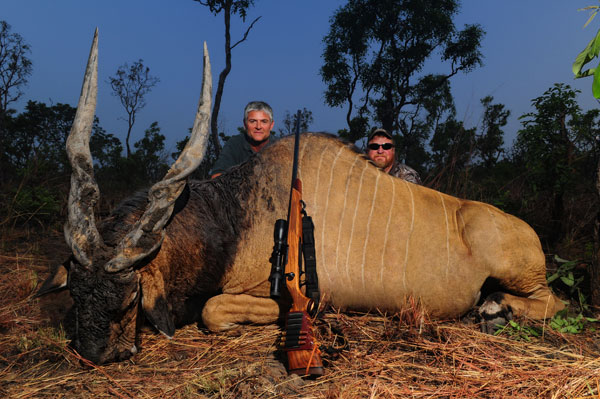Sign up for our Email Newsletter
Elk Moose Hunting
NORTH AMERICA
In North America the variety and scope of hunting opportunity is mind-boggling. Quality varies enormously from outfitter to outfitter and the ability of certain areas to produce good trophies is continuously changing. Monitoring current developments in dozens of places and making accurate predictions in this ever-changing scene is our full-time job. Our staff is dedicated to finding out where, when and with whom our clients should hunt in order to maximize the chance for taking the trophies they seek. We have worked with most of the outfitters we represent for many years and are thoroughly familiar with there hunting areas. We are also visiting and hunting with new operators constantly and evaluating their areas. Most of the quality big game hunting in the United States, outside of Alaska, is had on private land. We are proud of the close relationships we have developed with the owners of some of the finest hunting ranches in the United States. It is impossible to list every North American hunt we can arrange. In the following pages we have chosen to list the primary species of game which have been most popular with our clients in recent years. We have listed typical hunts by species. We are capable of constructing individual programs to fit every taste and budget. Please call or email for details of hunts for the species you are interested in hunting.
American Elk, or Wapiti
Arguably North America’s most impressive deer species, the elk was incorrectly named by European settlers, who were familiar only with the large deer of Europe, known as Elch (know in America as moose). The name by which it is know to most of the world is wapiti, which is the Shawnee native American name. There are four recognized subspecies, the Rocky Mountain elk, Roosevelt elk, Tule elk and the Manitoba elk.
Rocky Mountain Elk
The second largest subspecies in body size, the Rocky Mountain elk is the most widely distributed elk, ranging from northeastern British Columbia and western Alberta, southward to New Mexico along the Rocky Mountain chain. It is also the most numerous. The horns of this elk tend to be longer and score higher than those of any other subspecies. Bulls weigh up to 800 pounds.
Hunts:
• Utah – 7 day hunt, landowner permit
• New Mexico – 8 day hunt, landowner permit
• Colorado – 7 day hunt, landowner permit
Roosevelt Elk
Named for President Theodore Roosevelt, this largest of the elk family in found in the dense evergreen rainforest of the Pacific Northwest, in Washington, Oregon and on Vancouver island in Canada. Mature bulls can weigh over 1,000 pounds. The antlers are generally more massive, but shorter and narrower in spread than those of the Rocky Mountain elk.
Hunt:
• Vancouver Island – 10 day hunt
Tule Elk
This smallest of the elk family in North America is named for the large bullrushes that grow in its habitat, the southwestern United States. Mature bulls will weigh up to 600 pounds. Tule elk are found only in California, primarily in the Owens Valley.
Hunt:
• California – 7 day hunt, landowner permit
Manitoba Elk
About the size of the Rocky Mountain elk, but with smaller antlers, this wapiti is a denizen of the open prairies and grassland of Canada. It was virtually exterminated in the early 1900s, but has been brought back in stable numbers in various parks and private ranches. Today it is found in Saskatchewan and in Manitoba.
Hunt:
• Saskatchewan – 5 day hunt, fenced ranch
Moose
The largest of the deer family, moose are known as Elch (elk) in Europe. The name “moose” comes to us from the native American Ojibway word for this animal. Found throughout Canada and Alaska and down the Rocky Mountain chain as far south as Colorado, these animals prefer swampy habitat. There are four subspecies of moose in North America, the Alaska-Yukon moose, western Canada moose, eastern Canada moose and the Shiras moose. All carry the characteristic palmated antlers.
Alaska-Yukon Moose
This is the largest deer of the world. Mature bulls can reach the weight 1,800 pounds and carry antlers over 70 inches wide, weighting almost 100 pounds. This moose is found throughout Alaska and in the Yukon, as well as in the Mackenzie Mountains for the Northwest Territories in Canada.
Hunts:
• Alaska – 10 day hunt, fly in
• Yukon – 10 day hunt, fly in
• Northwest Territories – 10 day hunt, fly in
Western Canada Moose
The second largest North American deer after the Alaska-Yukon moose, this moose is found east of the Mackenzie Mountains in the Northwest Territories throughout the rest of western Canada to the Great Lakes, including small populations in the northern parts of North Dakota, Minnesota and Wisconsin in the United States. Mature bulls can reach 1,400 pounds in weight and carry antlers spreading 60 inches and more.
Hunts:
• British Columbia – 5 day hunt, fly in
Eastern Canada Moose
Slightly smaller in body size than the western Canada moose, but with distinctly smaller antlers, the eastern Canada moose is found from eastern Ontario eastward to Newfoundland and the Canadian maritime provinces, as well as in Maine and in Vermont in the United States.
Hunts:
• Newfoundland – 7 day hunt, fly in
Shiras Moose
This smallest of the moose of North America was named after noted conservationist, Congressman George Shiras. It is found down the Rocky Mountain chain from southern British Columbia and Alberta to Wyoming and Colorado.
Hunts:
• Utah – 7 day hunt, landowner permit
• Wyoming – 10 day hunt
Caribou
Known as reindeer in Europe and in Asia, the caribou produces more antler per pound of body weight than any other deer. It is highly gregarious and often travels in large herds. Caribou are found throughout Alaska and Canada and are divided into six categories by hunters – Alaska barren ground caribou, Canadian barren ground caribou, Arctic island caribou, mountain caribou, woodland caribou and Quebec-Labrador caribou, the last three groups being differentiated by trophy size.
Alaska Barren Ground Caribou
A large caribou with massive antlers, the Alaska barren ground caribou is highly migratory with distinct summer and winter ranges. Mature bulls weigh up to 500 pounds. It is found throughout most of Alaska and north of the Yukon river in the Yukon and west of the Mackenzie River, north of 66ºN in Canada.
Hunt:
• Alaska – 7 day hunt, fly in
Central Canada Barren Ground Caribou
Smaller and paler than the Alaskan barren ground caribou, the central Canadian barren ground caribou is a medium sized caribou found from eastern Northwest Territories, east of the Mackenzie River through Nunavut and the northern parts of Alberta, Saskatchewan and Manitoba to the western cost of Greenland. It is also highly migratory.
Hunt:
• Nunavut – 7 day hunt, fly in
Arctic Island Caribou
The smallest and palest of all caribou, mature bulls rarely exceed 300 pounds in weight. This animal lives in small herds and is found in the Arctic islands of Bank, Victoria, Prince of Wales and Somerset, as well as in the islands of the Northwest Territories and Nunavut and on the Boothia Peninsula. It is commonly hunted in combination with the Greenland muskox with which it shares habitat.
Hunts:
• Nunavut, Victoria Island – 4 day hunt
• Nunavut, Victoria Island – 4 day hunt, combined with muskox
Mountain Caribou
The largest of all North American caribou, the mountain caribou is one of the three types of caribou recognized by the Boone & Crockett Club, for separation by antler size and development. Mature bulls can reach weights of up to 600 pounds. This caribou carries the heaviest antlers of all caribou, but the spreads tend to be narrow.
Hunts:
• British Columbia – 5 day hunt, fly in
• Northwest Territories – 5 day hunt, fly in
Quebec-Labrador Caribou
This regional caribou is of medium size with large wide-spreading antlers. It is found in Quebec and Labrador Canada and is highly migratory.
Hunt:
• Quebec – 7 day hunt, fly in
Woodland Caribou
The third of the regional caribou, as established by the Boone & Crockett Club, this animal is similar in body size to the Quebec-Labrador caribou, but with distinctly smaller antlers. It is found from central Saskatchewan and Manitoba through Ontario to New Brunswick and Newfoundland in Canada.
Quebec-Labrador Caribou
This regional caribou is of medium size with large wide-spreading antlers. It is found in Quebec and Labrador Canada and is highly migratory.
Hunt:
• Newfoundland – 7 day hunt, fly in

